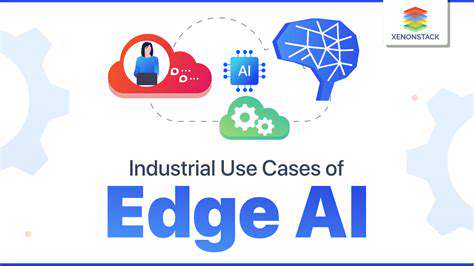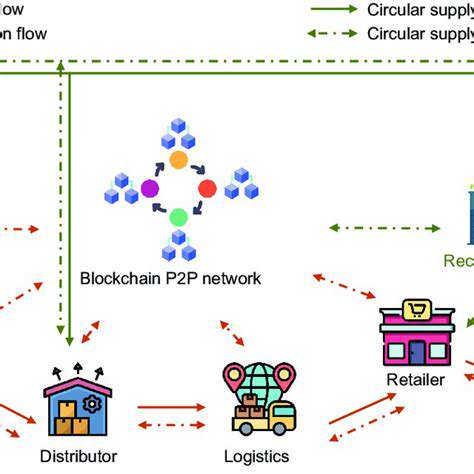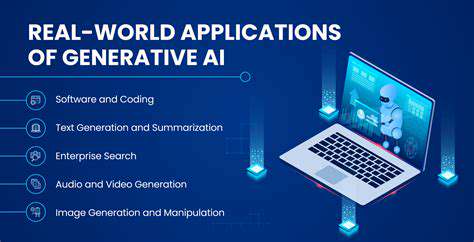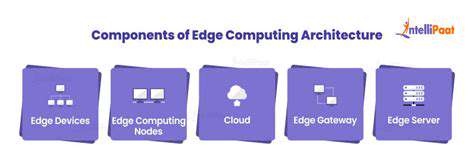Introduction to Edge AI in Industrial Automation

What is Edge AI?
Edge AI refers to the deployment of artificial intelligence (AI) algorithms and models directly on devices at the edge of a network, rather than relying on cloud-based processing. This approach enables real-time data analysis and decision-making, significantly reducing latency and improving responsiveness. Edge AI is crucial for applications requiring immediate feedback and action, such as autonomous vehicles and industrial automation.
This localized processing of data also offers significant advantages in terms of security and privacy. By processing data closer to the source, organizations can reduce the risk of data breaches and comply with stringent privacy regulations more effectively. The decentralized nature of edge AI further enhances resilience by minimizing the impact of network outages or disruptions.
Benefits of Edge AI in Industry
Deploying AI at the edge in industrial settings offers a plethora of benefits, including enhanced operational efficiency and productivity. Real-time data analysis allows for faster decision-making, enabling proactive maintenance and optimization of processes. This translates into significant cost savings and improved overall performance.
Furthermore, edge AI facilitates the development of smart and autonomous systems. This allows for a more dynamic and responsive approach to complex industrial tasks, leading to a higher level of automation and increased productivity.
Challenges of Implementing Edge AI
While the benefits of edge AI are substantial, implementing it in industrial environments presents certain challenges. One significant hurdle is the substantial investment required for hardware infrastructure and specialized software development. The complexity of integrating edge AI systems into existing infrastructure can also be a considerable obstacle for many industrial organizations.
Data management and security are also key considerations. Managing the vast amount of data generated by edge devices and ensuring its security while adhering to strict compliance standards can be a significant challenge. Robust data security protocols are essential for preventing unauthorized access and data breaches.
Applications of Edge AI in Manufacturing
Edge AI has numerous applications in the manufacturing sector. One example is predictive maintenance, where AI algorithms can analyze sensor data to predict equipment failures before they occur. This proactive approach reduces downtime and improves equipment lifespan.
Edge AI in Supply Chain Management
Edge AI can revolutionize supply chain management. By enabling real-time tracking and analysis of goods, edge AI can enhance logistics efficiency and reduce delays. This improved visibility and responsiveness can lead to significant cost savings and improved customer satisfaction.
Edge AI for Enhanced Safety and Security
In industrial settings, safety and security are paramount. Edge AI can play a crucial role in enhancing these aspects by monitoring critical parameters and detecting anomalies in real-time. This allows for immediate intervention and prevents potential accidents or security breaches. This proactive approach to safety is essential for minimizing risks and ensuring the well-being of personnel.
The Future of Edge AI in Industry
The future of edge AI in industry looks promising. As technology advances, we can expect even more sophisticated and powerful AI algorithms and hardware to emerge, furthering the capabilities of edge AI systems. This will lead to further advancements in areas like automation, predictive maintenance, and real-time decision-making.
Furthermore, the development of more energy-efficient edge devices will make edge AI more accessible and cost-effective for various industries. This trend will likely lead to widespread adoption of edge AI solutions in the near future.

Security and Data Privacy Considerations
Data Security in Edge AI
Implementing Edge AI in industrial automation introduces new security considerations. Data generated by sensors and processed at the edge is often sensitive and critical to operational efficiency. Protecting this data from unauthorized access, breaches, or tampering is paramount. Robust encryption techniques, secure communication protocols, and access controls need to be meticulously implemented across the entire edge AI infrastructure. Failure to address these security concerns could lead to significant operational disruptions, financial losses, and potential reputational damage.
Furthermore, the decentralized nature of edge AI systems makes centralized security management challenging. Each edge device needs to be individually secured and monitored for anomalies. Regular security audits, vulnerability assessments, and patch management are crucial for maintaining a strong security posture. This proactive approach ensures that potential vulnerabilities are identified and mitigated before they can be exploited.
Privacy Concerns with Edge Data
Edge AI systems collect and process vast quantities of data, often encompassing personally identifiable information (PII) or sensitive operational data. Adherence to relevant privacy regulations, such as GDPR or CCPA, is essential. Careful consideration must be given to how this data is collected, stored, processed, and ultimately disposed of. Implementing data anonymization and pseudonymization techniques can help mitigate privacy risks while enabling the necessary data analysis for optimizing industrial processes.
Ensuring data minimization, meaning only collecting the data necessary for the intended purpose, is another critical aspect of privacy compliance in edge AI deployments. Transparency about data collection practices and providing individuals with control over their data is essential to build trust and maintain regulatory compliance. Furthermore, establishing clear data retention policies and procedures will help ensure data is handled responsibly and securely throughout its lifecycle.
Protecting Against Malicious Attacks
Edge AI systems are vulnerable to various malicious attacks, including denial-of-service attacks, data breaches, and manipulation of sensor readings. Robust security measures, including intrusion detection and prevention systems (IDPS) and firewalls, should be implemented at both the edge device and central data processing levels. Regular security audits and penetration testing are vital to proactively identify and address potential vulnerabilities.
Protecting against sophisticated attacks that target the algorithms and models used in edge AI applications is also critical. Implementing secure software development practices, including code reviews and secure coding guidelines, can help prevent malicious code injection and ensure the integrity of the AI models. Regular updates and patching of the AI models and associated software are also necessary to address vulnerabilities that emerge over time.











